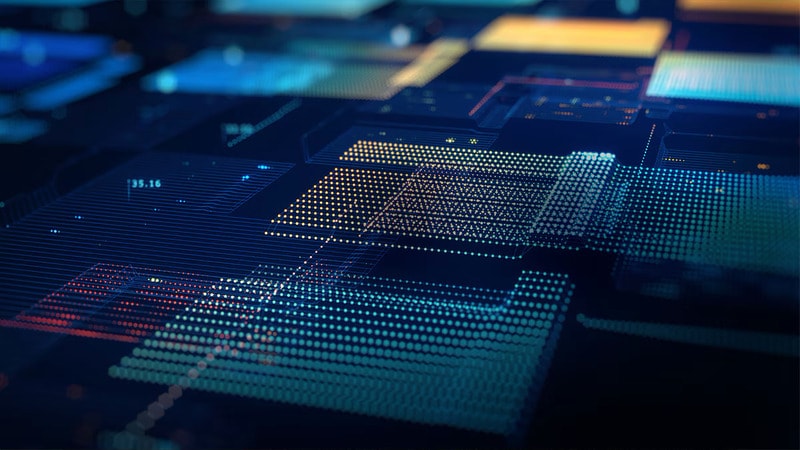AMD Surpasses AI Energy Efficiency Goal And Sets Critical Industry Bar

AMD Chief Technology Officer Mark Papermaster
AMDIn a surprising achievement for the semiconductor industry, AMD announced that it has surpassed its ambitious 30x25 energy efficiency goal, accelerating its green initiatives in AI and high-performance computing systems. What started as a bold target in 2020 to improve energy efficiency by 30 times over a five year span, has culminated in a remarkable 38x improvement—a feat achieved ahead of schedule no less. As the industry faces the growing demands of AI workloads, AMD’s latest achievement signals not only the company’s technical chops, but its commitment to driving more sustainable solutions in accelerated computing.
AMD Surpasses Its 25x30 Energy Efficiency Goal Set Back In 2020
AMDIn a quick fireside chat with AMD’s Chief Technology Officer, Mark Papermaster, I was able to glean more insight into how the company was approaching this greener footprint for AI data centers. Mark was quick to credit the company’s success to a comprehensive, holistic approach to chip design and system architecture. “Energy efficiency doesn’t come from just one facet of technology,” Papermaster explained in our meeting. “It’s not just about the silicon, the chiplets, or even the software. It’s all these elements coming together—architecture, design, packaging, software, and even data center infrastructure—that enables real efficiency at scale.”
This integrated approach became especially evident in the design of AMD’s MI300 accelerator, which saw key advancements in 3D stacking and chip interconnects. The latter, in particular, was pivotal in improving performance-per-watt metrics of the GPU. As Papermaster highlighted, “When you stack chips vertically, you can achieve up to a 20x improvement in energy efficiency, compared to traditional lateral design approaches.”
Looking forward, the next generation of AMD chips—AMD’s MI350 Series, which was just launched yesterday—is expected to push the envelope even further. These cutting-edge chips, with 3nm GPU chiplets and new matrix math formats, are expected to boost energy efficiency by another 35x over the previous generation, positioning AMD to better compete against Nvidia’s most powerful Blackwell GPUs and systems.
That said, while the 38x energy efficiency gain is a milestone, it is not the end of the road for AMD. As AMD Senior Vice President Samuel Naffziger shared in a recent company release, AMD has already shifted focus to its next ambitious goal: a 20x improvement in rack-scale energy efficiency by 2030. “The 20x by 2030 rack-scale goal reflects the next frontier, not just focused on chips, but smarter and more efficient systems, from silicon to full rack integration to address data center level power requirements.,” Naffziger explained. AMD has shown that node-level efficiency gains can be transformative, but as AI workloads scale, the most significant impact will be at the system level. By 2030, AMD aims to achieve a 20x improvement in energy efficiency for entire racks of AI systems.
In addition, Papermaster explained that these efficiency goals were “one of the motivators for AMD in acquiring ZT Systems, so that AMD now has 1000 rack design engineers to help us optimize, get those connection lengths minimized, you know, provide energy efficiency hooks wherever we can.”
This new target, set with a 2024 baseline, signals a major shift in how AMD views AI energy efficiency. Instead of focusing purely on individual chip performance, the company is looking at full system optimization—from CPUs and GPUs to networking, memory, and storage. It’s another lofty goal, but in a day and age where hyperscalers like Google, AWS and Azure are actively exploring nuclear power plants to feed their hungry data centers, it’s also a necessary goal for the planet.
AMD Rack-Scale 20X30 Efficiency Goal Consolidates 275 Racks Of AI Servers Into A Single Rack
AMDThe potential impact of this new 20x by 2030 goal is significant. According to AMD’s projections, this leap could reduce the operational electricity use of a typical AI rack by more than 95% and slash carbon emissions from around 3,000 metric tons of CO2 to just 100 metric tons for model training specifically. The improvements also promise dramatic gains in operational efficiency, potentially consolidating 275 racks into just one fully utilized rack.
In addition, AMD's 20x30 vision isn't limited to hardware alone. While its energy efficiency goals primarily focus on silicon and system design, the company acknowledges that software will also play a significant role. As software developers continue to innovate with more efficient algorithms and lower-precision, quantized approaches, overall AI efficiency could improve by as much as 100x by the year 2030.
For AMD, this will be driven by new opportunities for collaboration with the broader ecosystem. Through its open-source software initiatives, such as its ROCm (Radeon Open Compute platform) software stack, and close partnerships with AI innovators like OpenAI and others, AMD is targeting to position itself as a key enabler of sustainable AI solutions.
As AMD closes out one chapter with the success of its 30x25 initiative, the company is already setting the stage for its next big efficiency challenge. With its sights set on the 20x by 2030 rack-scale goal, the company is attempting to push the limits of what’s possible in AI energy efficiency. “Think about the total cost of ownership equation too. It’s how much you’re charging for the product and how much floor space it consumes. And what’s the power draw? Because I've got to pay for the power. Those are the elements of TCO. So this energy efficiency is directly in the buying consideration of all our customers,” notes Papermaster.
Regardless, in this new era of AI-accelerated everything, where every watt counts, AMD appears committed to pushing both performance and energy efficiency. These efforts and goals could help to shape the future of how the industry scales AI—responsibly and sustainably.
Dave is president and principal analyst at HotTech Vision And Analysis, a tech industry analyst firm specializing in consulting, test validation and go-to-market strategies for major chip and system OEMs. Like all analyst firms, HTVA provides paid services, research and consulting to many chip manufacturers and system OEMs, including companies mentioned in this article. However, this does not influence his objective coverage.










